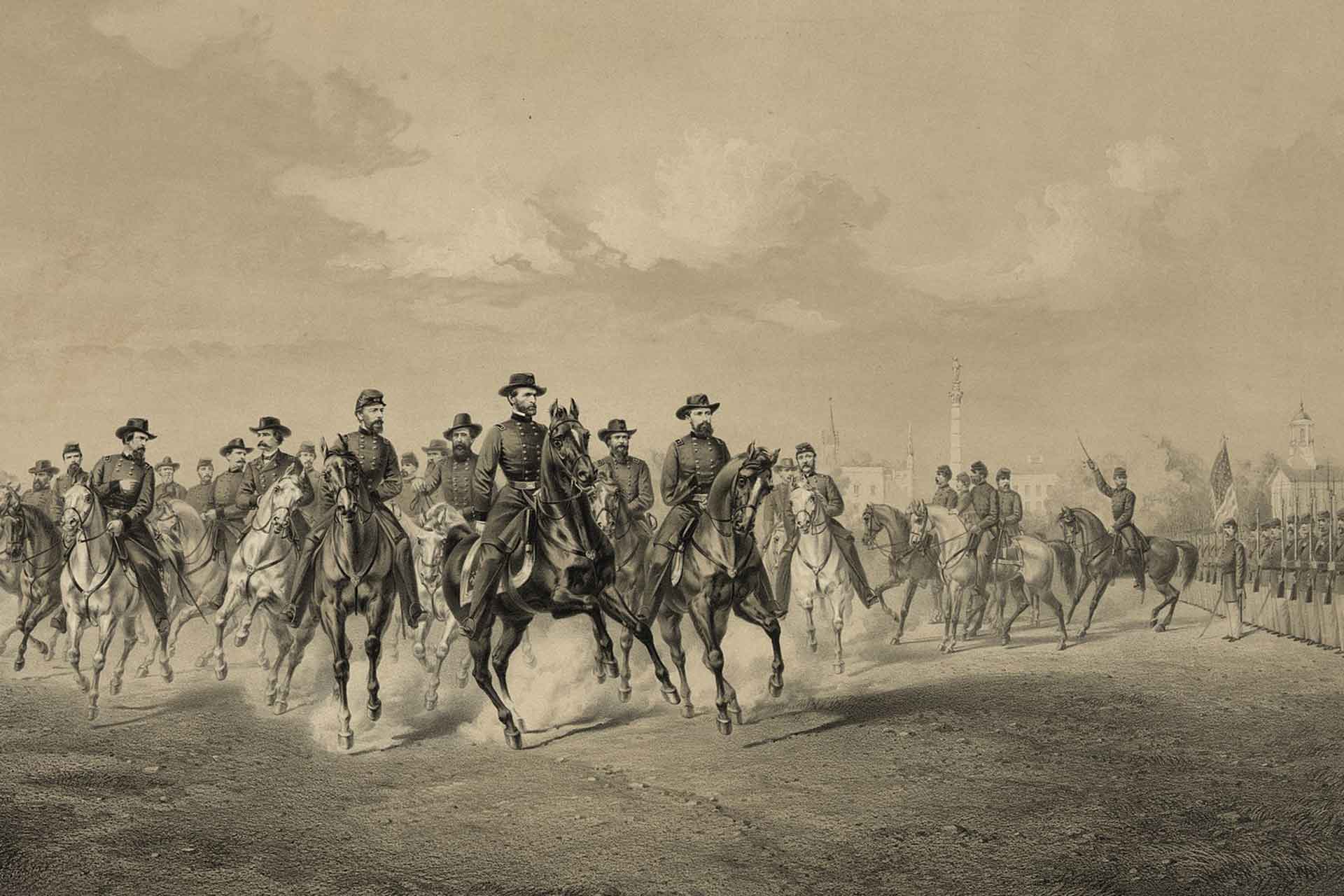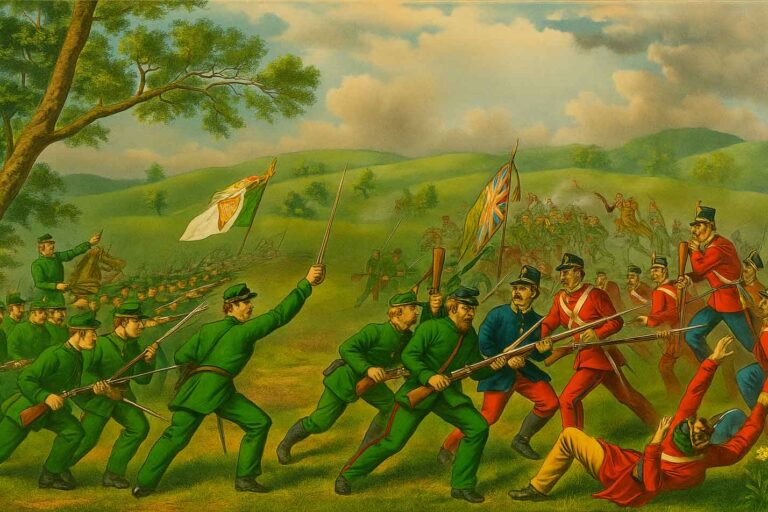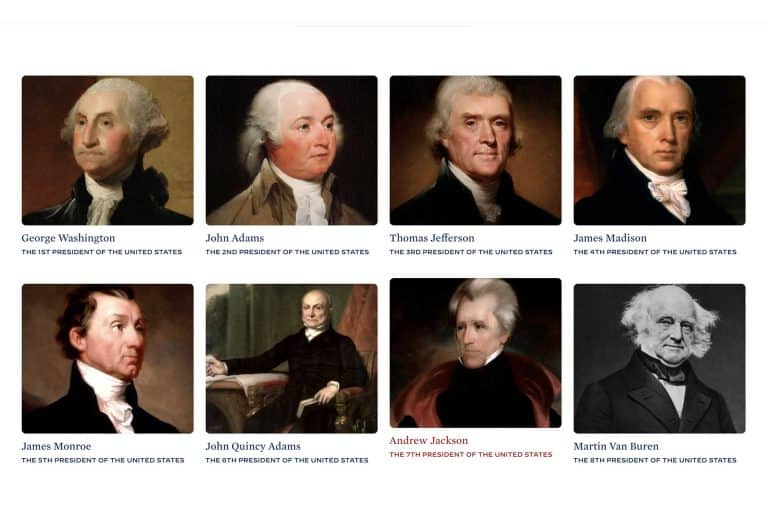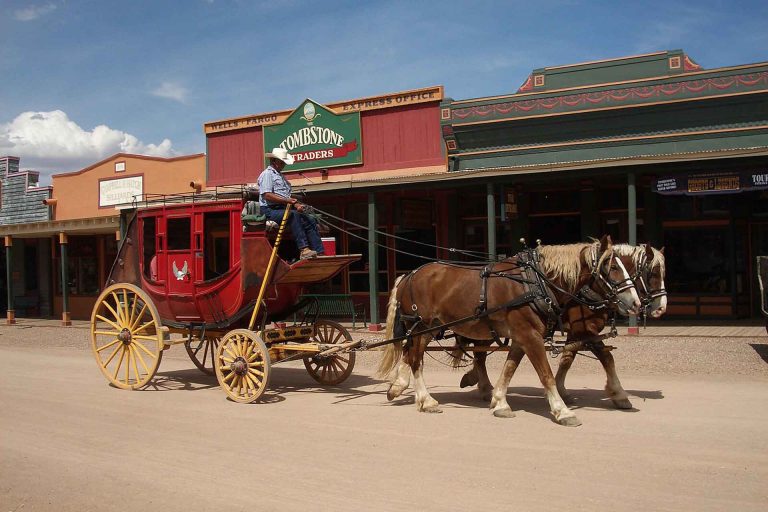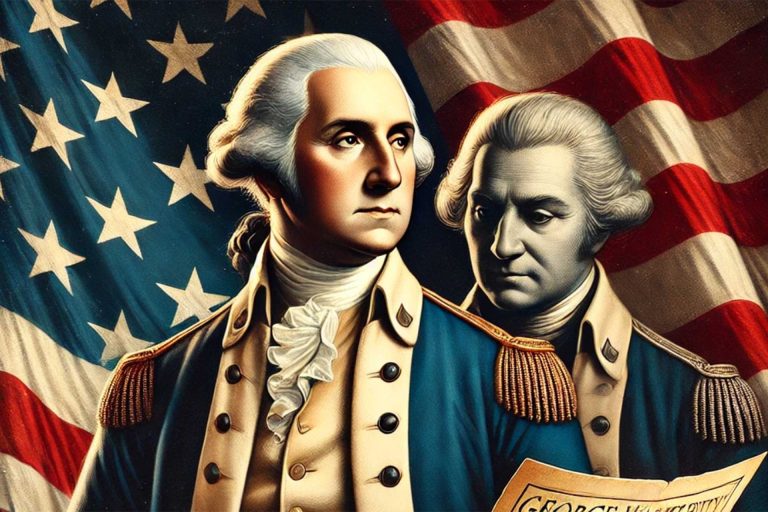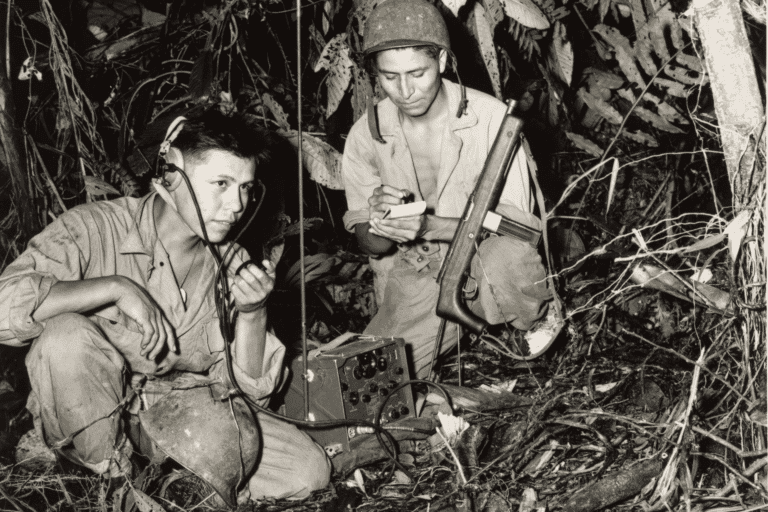10 Ways Sherman’s March to the Sea Impacted the Civil War and the South
Throughout the American Civil War, few campaigns loom as significant or controversial as General William Tecumseh Sherman’s March to the Sea. This infamous and audacious venture, far from being a simple military maneuver, was a strategic masterpiece that forever altered the trajectory of the conflict and imprinted a lasting scar on the Southern psyche. The campaign’s conception was rooted in a new philosophy of warfare; rather than merely defeating opposing armies, it sought to dismantle the entire socio-economic foundation upon which the Confederacy stood.
Sherman’s forces embarked on this treacherous journey after their pivotal victories in major battles and sieges, the most notable being the Siege of Atlanta. Atlanta, an industrial and railroad hub, was paramount to the Confederacy. After months of intense warfare, its eventual fall in September 1864 gave Sherman a springboard for his March. The burning of Atlanta, whether viewed as a military necessity or an act of wanton destruction, remains one of the most iconic incidents of the war, symbolizing the Union’s resolve to cripple the Confederacy by any means.
As Sherman’s 62,000 soldiers marched from Atlanta to Savannah, they left a trail of devastation that spanned approximately 300 miles. Destroying everything from railways to crops, the March was not just about winning battles—it was about shattering the will and capability of the South to continue the fight. Yet, the impact of Sherman’s March to the Sea was far more multifaceted than mere destruction. We will delve into the profound ramifications of this campaign, shedding light on its military, socio-economic, and cultural consequences for the Confederacy and the broader American narrative.
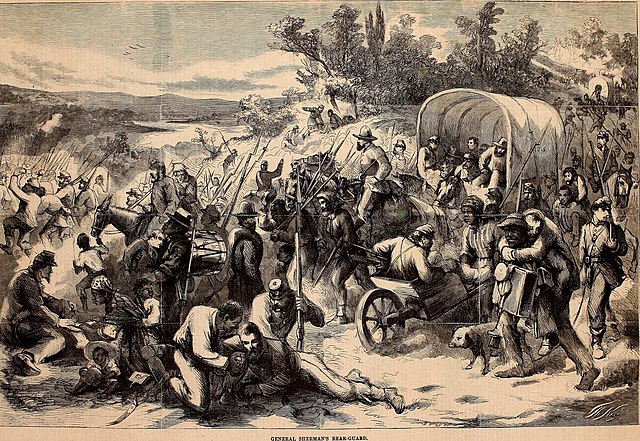
The Military Impact on the Civil War
Sherman’s March to the Sea wasn’t merely a movement of troops but a demonstration of strategic dominance designed to break the enemy’s combatants and its capability to continue the conflict. The military ramifications of this campaign on the Confederate effort were profound and far-reaching.
A primary consequence was the destruction of pivotal infrastructure. Sherman’s forces systematically removed railways, communication lines, and essential bridges. Such targeted destruction made troop movements, communication, and crucial supply transportation challenging for the Confederacy, which had already grappled with limited resources.
Furthermore, the March brought significant Union victories. The capture and burning of Atlanta were notable. Still, there were also engagements, such as the Battle of Griswoldville and the Battle of Honey Hill, enhancing the Northern spirit while diminishing that of the South. More than just winning battles, Sherman’s March to the Sea displayed the overwhelming might of the Union and hinted at the eventual downfall of the Confederate side.
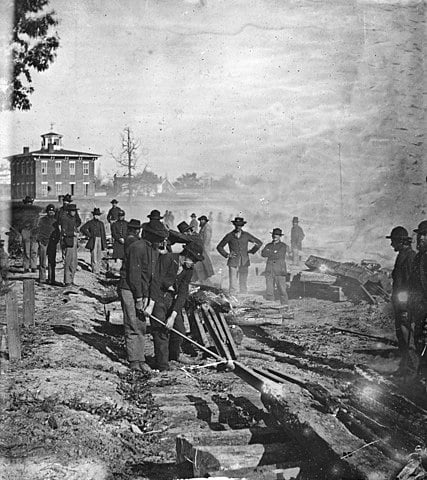
Economic Devastation: The Wounds from Sherman’s March
While serving as a strategic military maneuver, Sherman’s March to the Sea also functioned as a campaign of economic warfare. As his troops marched relentlessly through the heart of the Confederacy, they left a trail of devastation that deeply scarred the Southern economy, which was already reeling under the burdens of the ongoing conflict.
Key transportation arteries, notably railroads, and bridges, fell victim to Union forces. Their destruction disrupted supply chains, hampered troop movements and choked off vital routes that facilitated commerce and communication for the Confederates. Crops, the backbone of the agricultural Southern economy, were set aflame or seized. This deprived Confederate armies of essential supplies and left many Southern civilians in dire straits, facing potential food shortages.
Moreover, livestock, vital for food and labor, were confiscated or slaughtered. Such actions rendered vast tracts of farmland unproductive and further intensified the economic struggles the South was experiencing. With these immense swathes of destruction, Sherman effectively neutralized the South’s financial capacity to sustain the war, accelerating the demise of the Confederate cause.
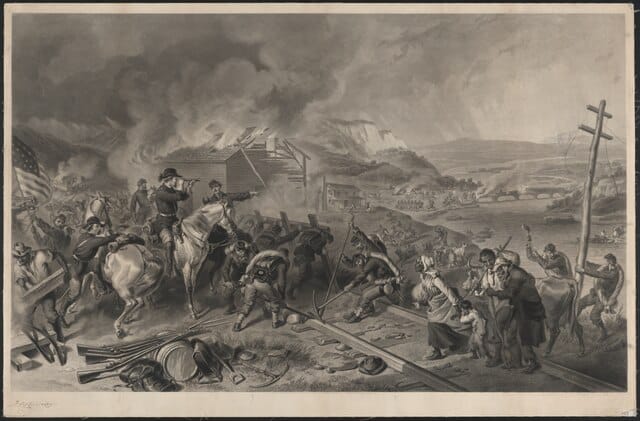
The Psychological Aftershocks: Union Dominance in Confederate Territory
The impact of Sherman’s March to the Sea went beyond mere physical devastation—it tore at the very psyche of the Confederate populace. To witness Union forces march unchecked through the South’s heartland was a sight many Southerners never anticipated. This audacious act did more than crumble infrastructures; it eroded the confidence and hope that the Confederacy held in its ability to win the war.
Every town Sherman’s troops entered, and every piece of land they scorched was a constant, visual reminder to the South of the might and capability of the Union forces. For a population that took immense pride in its resilience and resistance against Northern aggression, this unimpeded March was a glaring signal of their military’s diminishing prowess. It wasn’t merely the loss of resources or territory that hurt; it was the growing realization that the dream of an independent Confederacy was fading rapidly.
Moreover, word of Sherman’s March to the Sea and its successive victories spread throughout the South like wildfire, further intensifying the feeling of vulnerability among Confederate civilians. Where else could they reach if such a massive Union force could penetrate deep into their heartland? This psychological setback not only dampened the morale of the Confederate troops but also sowed seeds of doubt among its citizens about the eventual outcome of the Civil War.

Accelerated Emancipation: The Dawn of Freedom in Sherman’s March to the Sea
A salient and often understated impact of Sherman’s March to the Sea was the acceleration of emancipation in the territories his troops traversed. As the Union army marched deeper into the Confederate heartland, they became inadvertent agents of liberation. Upon seeing or hearing of the approaching blue-coated soldiers, thousands of enslaved people seized the moment to break the chains of bondage and claim their freedom. These men, women, and children saw in Sherman’s forces not just an advancing military entity but a beacon of hope.
Seeing these liberated souls trailing behind the Union army was poignant and powerful. Many of them viewed Sherman’s army as the embodiment of the Emancipation Proclamation in action, a tangible force finally implementing President Lincoln’s decree of freedom. For these formerly enslaved people, joining the column of Union soldiers, even with the uncertainties of war, was a step towards a brighter, free future.
Yet, this massive movement of people had its challenges. The Union army, although supportive of emancipation, was primarily a military expedition and thus had to grapple with the logistical and humanitarian challenges of thousands of formerly enslaved people tagging along. Despite these challenges, the sight of emancipated individuals marching alongside Union troops symbolized a turning tide, a visual representation of the Confederacy’s waning grip on its territory and its enslaved populace.

The Advent of Total War: Sherman’s Strategy and its Lasting Implications
Sherman’s March to the Sea is a defining moment in military strategy, illustrating a departure from conventional warfare. His approach marked the advent of “total war,” where the battlefield extended beyond uniformed soldiers to encompass the entirety of society. Instead of focusing on Confederate troops or key fortifications, Sherman turned his attention to the South’s support system’s heart: infrastructure, industry, and civilian morale.
Civilian properties, from modest homes to vast plantations, were systematically targeted alongside traditional military assets like bridges and supply depots. Sherman’s goal was twofold: incapacitate the Confederacy’s logistical backbone and weaken the resolve of its people. In doing so, he not only aimed to hasten the war’s conclusion but also to demonstrate the overwhelming might of the Union.
Sherman’s March to the Sea wasn’t just a pivotal campaign in the Civil War; it heralded a shift in global warfare tactics. Wars would no longer be isolated to defined battlefronts. Instead, they would encompass entire societies, challenging the traditional norms of combat and setting the stage for the comprehensive conflicts of the future. We will return to the “total war” impact later in this article.
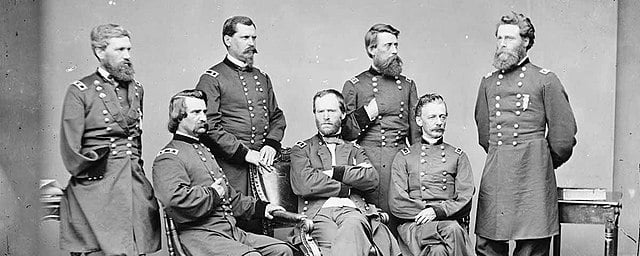
Political Ripples: How Sherman’s March Bolstered Lincoln
Sherman’s March to the Sea, in its sweeping devastation, had implications far beyond the scorched landscapes of the South. Its aftershocks reached the corridors of political power in the North, influencing the national mood and electoral outcomes.
In the North, news of Sherman’s triumphant March was met with jubilation. After years of grueling warfare and countless casualties, the Union Army’s ability to penetrate deep into the Confederate heartland was a beacon of hope. It signaled that victory was within grasp. This surge in morale had a direct political impact. At a crucial moment, just months before the 1864 Presidential election, it galvanized support for President Abraham Lincoln. The once-wavering Northern public now saw a leader capable of delivering a conclusive end to the bloody conflict in Lincoln.
Lincoln’s re-election in 1864 was, in many ways, an endorsement of his unwavering commitment to both preserve the Union and abolish the institution of slavery. With its show of Union might, Sherman’s March to the Sea played a pivotal role in shaping this political narrative. With Lincoln at the helm for another term, the Union’s resolve was only solidified, ensuring the war would be prosecuted to its ultimate end, and the chains of slavery would be forever broken.
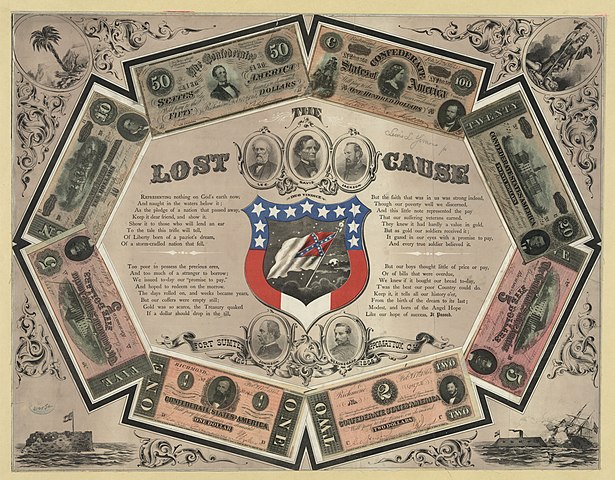
The Deep Scars: Resentment in the South and the Emergence of the “Lost Cause”
The Civil War, a conflict that divided a nation and its people, was marked by moments of intense strife and destruction. Among these, Sherman’s March to the Sea stands out for its immediate devastation and the long-lasting emotional and cultural impact it imprinted on the Southern psyche. As Union troops cut a path of destruction across Georgia and into the Carolinas, they left behind smoldering landscapes and a deeply wounded Southern pride.
In the wake of the war’s conclusion, the South grappled with the magnitude of its loss. From this milieu of despair and reflection emerged the “Lost Cause” narrative. It portrayed the Confederacy’s fight not as one for preserving slavery but as a courageous and noble stand against overwhelming odds. Central to this narrative was the depiction of Southern soldiers as honorable men defending their homeland and of the Northern invaders as ruthless aggressors. With its blatant targeting of civilian infrastructure and resources, Sherman’s March to the Sea found a significant place in this narrative. The March was frequently invoked as emblematic of the North’s purported excesses and cruelty.
As decades passed, the “Lost Cause” narrative deeply embedded itself in Southern memory and culture. It was pivotal in shaping how many in the South remembered and interpreted the war. The extensive destruction caused by Sherman’s troops was not merely an event in a bygone conflict; it became a symbol of Northern aggression and a rallying point for those keen to romanticize the Confederate cause and downplay the centrality of slavery to the conflict. Thus, The narrative served as a salve for the South’s wounded pride and a tool for shaping historical interpretation for generations to come.
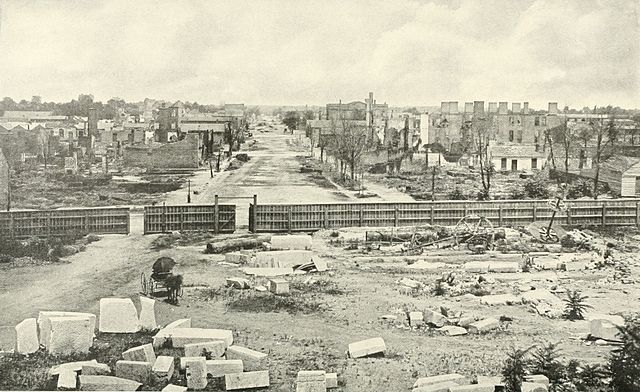
Post-war Reconstruction Challenges: The Lingering Shadows of Sherman’s March
Sherman’s March to the Sea was more than a military campaign; it became emblematic of the ravages of war that much of the South would grapple with for years to come. The swath of devastation left behind, particularly in Georgia and the Carolinas, presented profound challenges during the pivotal era of Reconstruction that followed the Civil War.
Georgia, with its significant agricultural base, faced economic ruin. The destruction of crops, livestock, and vital infrastructure like railroads meant the state’s economic recovery would be painstakingly slow. As the state sought to rebuild, it was confronted with physical reconstruction and the need to reform its societal fabric in a post-slavery era. The Carolinas, similarly afflicted by Sherman’s troops, had to navigate the dual challenges of rebuilding their economies and societal structures.
In particular, South Carolina faced Sherman’s heightened wrath, as many considered it the instigator of the war due to its early secession and role in the Battle of Fort Sumter. The scorched earth tactics of the March left many towns and communities in ruins, requiring substantial investments and years of dedicated effort to return to any semblance of pre-war normalcy.
Reconstruction was a time of significant political, economic, and social transformation for the South. For the regions most affected by Sherman’s March to the Sea, the scars of war added another layer of complexity. The need to rebuild infrastructure was a logistical challenge and a symbol of the South’s determination to rise from the ashes. The rebuilding process also prompted significant questions about the South’s identity and future, framing the challenges and possibilities of a new chapter in American history.

The Indelible Cultural Echoes
Sherman’s March to the Sea, beyond its immediate military and political consequences, carved a deep niche in America’s cultural and collective memory. This audacious campaign, accompanying tales of devastation and determination, has been immortalized in many songs, stories, and legends. From ballads capturing the anguish of those who witnessed their homes go up in flames to narratives highlighting the strategic genius of the March, the cultural artifacts surrounding this event are numerous and varied.
In literature and art, the March often symbolizes the essence of war’s capacity to reshape societies, landscapes, and individuals. The stories surrounding the March straddle the realms of fact and folklore, with tales of bravery, desperation, and defiance interwoven with historical realities. Such narratives have been vital in shaping how subsequent generations understand and engage with this defining moment in Civil War history.
However, the cultural resonance of Sherman’s March to the Sea isn’t limited to tales of bygone eras. In the South, memories of the March — and the broader Northern aggression during the Civil War — contributed to a lingering resentment that has perdured in some quarters, forming an undercurrent in the South’s relationship with the North. While the animosities of the 19th century have primarily faded, remnants of this historical grievance still emerge in conversations, debates, and contemporary art and literature. This lasting cultural impact is a testament to how historical events can shape identities, perceptions, and regional narratives for generations.
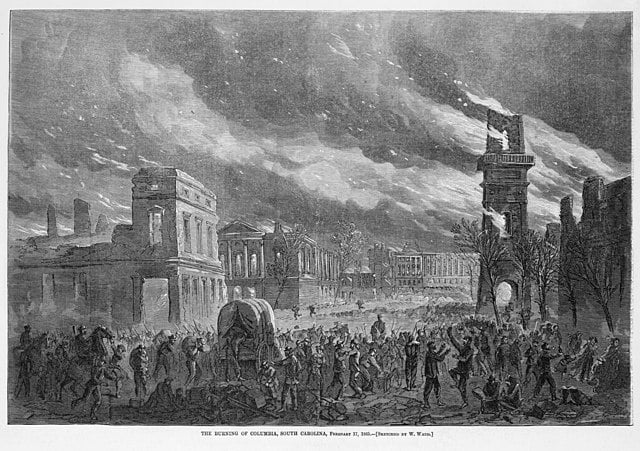
A New Dawn in Warfare: A Major Shift in Warfare Philosophy
Before Sherman’s bold foray into the heart of the Confederacy, warfare, particularly in the Western tradition, was heavily influenced by Napoleonic tactics. These strategies primarily emphasized direct engagements with enemy forces, often resulting in large-scale battles where formations and terrain played critical roles. The focus was mainly on defeating the enemy’s military capacity in the field, with civilian infrastructure and economic assets typically remaining peripheral to the campaign’s core objectives.
Sherman’s March to the Sea, however, brought to the fore a stark departure from this traditional mode of warfare. Instead of solely targeting Confederate armies, Sherman understood the importance of undermining the socio-economic foundations that fueled the Confederate war effort. By destroying railroads, crops, and other infrastructure, Sherman aimed not just at military victory but at breaking the will of the Southern people to continue the fight. He targeted the entire system that kept the Confederacy alive and fighting.
As mentioned earlier, this strategy signaled the dawn of what would later be termed “total war” — a form of warfare that recognizes the interconnectedness of civilian infrastructure, economic assets, and the military. By targeting all these facets, the goal was to hasten the end of the conflict by any means necessary. Sherman’s approach, while controversial, proved to be devastatingly effective. In subsequent conflicts around the world, elements of this strategy would be adopted and adapted, marking a profound shift in the philosophy and conduct of warfare.
Reflecting on the Echoes of Sherman’s March
Sherman’s March to the Sea remains one of the most debated and analyzed military campaigns in American history. Its reverberations are felt not only in the pages of military strategy books but in the very fabric of Southern identity and American historical consciousness. Through his audacious tactics, Sherman not only expedited the end of the Civil War but also left an indelible mark on the psyche, culture, and development of the American South.
The legacy of the march is multi-faceted: from the devastation of the Southern economy to the acceleration of emancipation, from the ushering in of total war tactics to the deep-rooted resentment that would linger for generations. The march has been immortalized in songs, stories, and legends, both praising and condemning its consequences. As we reflect on the profound impacts of this military endeavor, it becomes evident that Sherman’s March to the Sea was not just a pivotal moment in the Civil War, but a defining episode in the American narrative.

